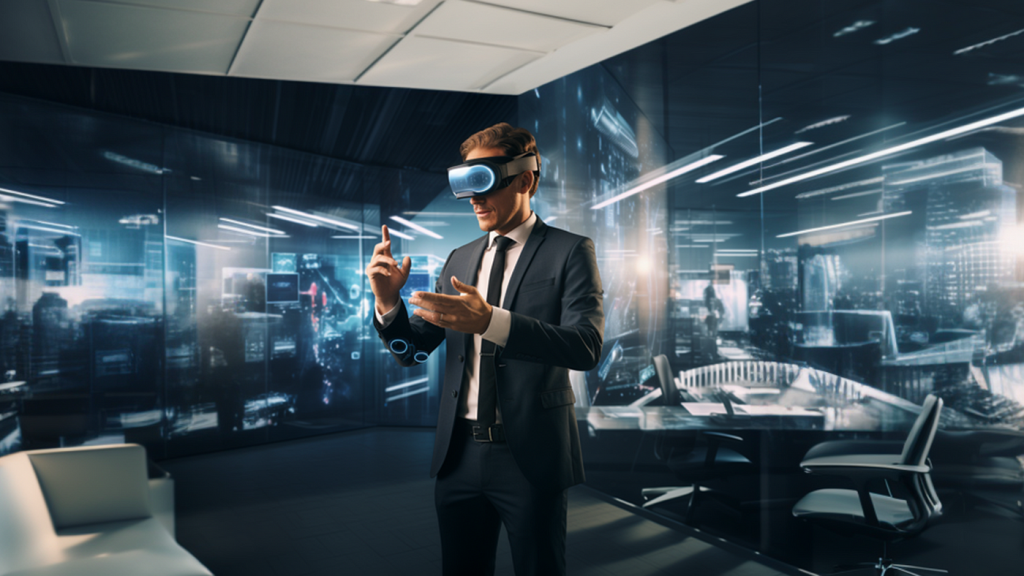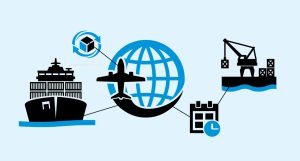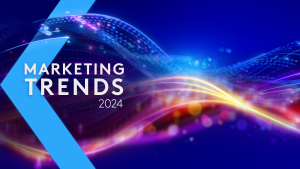Exploring the Impact of Immersive Technologies on Modern Business Practices

The pursuit of innovation is a constancy for businesses that need to maintain a competitive edge by being on the cutting edge of technological advancements. As a consequence of the fast-paced evolution of technology in recent times, businesses have taken on different forms in how they communicate, interact with customers and operate internal processes. Since the rise of digital technology, it has played an increasingly crucial role in businesses, and its application continues to be explored with the emergence of novel technologies. Amongst the array of digital technologies, immersive technologies such as Virtual Reality (VR), Augmented Reality (AR) and Mixed Reality (MR) technologies play a crucial part in transforming consumer experience, but also reshaping internal business processes. By providing an immersive experience that enables an interactive engagement with one’s surroundings, these technologies open up new possibilities for how people work. This article scopes the impact of immersive technologies in the evolving context of how businesses experiment and operate with these innovations.
Enhancing Customer Experience with Immersive Technologies
The changing approach to marketing, evident in the increasingly immersive technologies available to business owners to interact with their customers, is considered important because it provides consumers with a richer, more interactive experience with the product. In current conditions, immersive technology and the surrounding trend of gaming plays a vital role in improving customer experience. Virtual Reality (VR) creates the impression of presence through the use of visuals and sound that simulate a simulated environment, allowing customers to interact with a product. The simulation can be carried out in various ways, for example, real-estate companies make use of VR to allow prospective buyers view a property through stage management. Thus, consumers are able to virtually walk in their would purchase house location without having to actually visit the property immediately. This is made possible with computer-generated 3D models and 360-degree video recordings used in architectural walkthroughs and virtual photography. Retail products also benefit from immersive technologies. It has now become increasingly common for brands such as IKEA to provide customers with AR apps that allow the consumer to visualise the appearance of furniture within their home environment before making a purchase. This improved and emotionally connected experience between customer and product enhances customer satisfaction and loyalty to the brand.
Augmented Reality (AR) is changing the way customers engage with brands by associating digital information with the physical environment. This is especially evident in the e-commerce and retail business. AR has aided various beauty brands including Sephora and L’Oréal to allow customers to try out make-up virtually on their smartphones. This not only improves the customer experience but also reduces the rate of returns as customers feel more assured with the purchase, knowing how the product looks before actually buying it. This technology also enables customers to interact with the digital content by providing them with detailed product information, reviews and tutorials, directly in their real-world environment.
Mixed Reality (MR) is closer still to the AR experience, combining elements of both. MR envelops users in an interactive virtual space where they can interact with digital objects as real-world objects. This technology is already being used by businesses to bridge the gap between real and virtual spaces, immersing customers in dynamic and interactive artificial environments. For example, BMW uses MR to allow customers to customise cars in real time in a 3D space, so shoppers can get an in-depth understanding of a product without physically building hundreds of thousands of prototype cars and acquainting drivers with every aspect of the vehicle.
Streamlining Business Operations with Immersive Technologies
Immersive technologies are not only changing the consumer experience but also making business operations more efficient. A key application is in employee training and development. VR simulations can mimic real-life experiences to train employees to perform specific tasks under different scenarios. For example, Walmart uses VR training lessons to teach customer service and how to handle difficult customers, leading employees to be better at their jobs and feel more confident in tackling them. Immersive technology can be especially useful in parts of the world where the jobs involve a lot of hands-on activity – such as healthcare, aviation and manufacturing – but training on-the-job in a real-life context can be dangerous and expensive.
As well as providing training, AR is improving operational efficiency by providing information and guidance to employees in real time. For example, in the manufacturing industry, information and instructions can be displayed over machinery such as lathes, which helps an engineer perform repairs and maintenance more quickly and effectively. This leads to reduced downtime and fewer errors, and therefore higher productivity and cost savings. This approach is used by organisations such as Boeing, which makes aircraft. Using AR glasses, Boeing is able to provide real-time on-the-job support to assembly-line workers building planes. On-site experts can be directed to exactly where a problem has occurred, and they will then guide those workers in repairing that specific part through a glasses feed – even if the expert is located elsewhere in the world.
Mixed Reality is also enabling more productive business operations by fostering spaces where people can work collaboratively, no matter where they are physically located. MR platforms facilitate collaboration between team members to tap into each member’s strengths and develop a shared understanding of the task at hand. For instance, teams working on 3D models can collaborate with each other in a shared virtual space to make real-time adjustments and visualise the final product before its construction. The carmaker Ford uses MR technology to enhance the efficiency of its design process. Engineers can better interact with digital representations of the design prototype and also take steps to identify potential issues before the final product is completed. This fosters an iterative and collaborative process that can both speed up the development cycle, but also create higher-quality products in the long run.
Marketing and Advertising with Immersive Technologies
Marketing and advertising are seeing radical change thanks to immersive technologies that enable marketers to create a special branded space in which audiences can experience brands and products in their own reality, in ways that are unattainable with traditional advertising techniques. Everyone knows the fast-moving nature of modern advertising, but immersive technologies bring with them new speed, capabilities and ways to reach potential customers in a sustained and innovating manner. VR and AR allow marketers to create advertisement campaigns unlike any achieved by traditional platforms and arenas: immersive and lasting in an artificial environment – even in human-looking artificial humans – where products and experiences relating to a brand can be actioned by the audience, bringing emotional engagement and brand advocacy in the sphere of a startled and unguarded participant. Companies such as Coca-Cola have in their campaigns deploying VR demonstrated how to use these features of advertising to build branded spheres in which consumers ‘exist’ in a more innocent, human and pure reality helped immensely by VR and AR technologies. The success of these brands’ campaigns resides in the immersive potential of VR and AR, capable of engaging consumers at a far more visceral and emotional level, leading to significant increase in brand recall and engagement.
The strength of AR for product visualisation and interaction prospects in marketing strategies is undeniable. AR ads on social media platforms are another form of marketing that provides improved visualisation of products. This, in turn, allows customers to directly interact with products from their feeds.Snap Inc.’s Snapchat is one contemporary app that has integrated AR lenses allowing for the creation of high-engaging interactive brand ads. Air New Zealand, for instance, launched an AR Halloween challenge campaign using Snapchat, where consumers could use the lenses to express their fears and send them to friends or family.This type of AR marketing enhances customer engagement, while at the same time providing valuable data to brands about their target audience, such as preferred language and engagement times. Such an approach can help firms improve their services and products through efficient tailored marketing campaigns.
Modes of experiential marketing benefit from the mix of real and digital worlds: brands can develop experiential content for consumers to relate to the products they sell and experience them in new ways. One manner in which this is achieved is through Microsoft’s HoloLens interactive product displays with which shoppers can engage and interact with the products in-store. That manner of shopper engagement benefits both the consumer and the company engaging in the interaction, as it serves to develop a deeper intersection between the audience and the product being sold. Consequently, MR proves valuable to certain brands as it allows for the creation of manifold marketable content while simultaneously aiding in audience research and development.
Innovation in Product Development through Immersive Technologies
Immersive technologies are changing the way new products are developed, making it possible to do more-efficient, collaborative workflows. In Virtual Reality, you can create, test and prototype products before they exist in the real world, which has saving-time and resource advantages and allows for an increase in iterations – or ‘tries’ – before production begins. The interiors of any Airbus cabin can be designed and tested in VR before implementation, with designers and engineers being able to spot comfort and safety issues early on.
Some manufacturers of consumer goods such as automobiles and mobile phones have also been trying out AR to further These tools can overlay digital prototypes on real-time physical environments, thereby allowing designers to gain a better sense of what a product looks and feels like in real life and how it would actually fit into the real space around other design objects. It is the kind of spatial information that proves so useful in building products such as cars and walls. By placing prototypes against a real backdrop, designers get a sense of the product’s scale and space requirements in the world. In the automotive sector, designers are using AR to paint digital representations of moving parts into virtual cars. They then ride around with the digital models, retooling the placement of parts, such as seats and doors, to achieve optimal function and aesthetics.
Mixed Reality makes collaborative and interactive design possible: teams located in different places can work on the same digital prototype, in a shared virtual space, suggesting modifications that can be implemented immediately. Thanks to Mixed Reality, work processes are more efficient; also, every person involved in a project, from the C-level executive to an intern, will always know where everything stands. Engineers at Lockheed Martin can create, modify and test parts for a new spacecraft in digital form.
Transforming Workplace Collaboration with Immersive Technologies
Immersive technologies are revolutionising workplace collaboration by overcoming geographical barriers and enabling human-to-human, real-time co-creation within virtual spaces. Companies can now meet and collaborate virtually at the same time and place, even when spread across different locations. This becomes particularly useful for remote and distributed teams. For example, companies such as Spatial are now offering VR collaboration platforms to help teams engage in virtual meetings, brainstorm ideas, work on projects and explore remote places at the same time, boosting productivity and engagement.
Likewise, AR is improving the work of collaboration by adding more contextual information in real time, which is helping team- members engage in timely, informed dialogue. To illustrate this, AR applications can impose digital data on a real-world setting and in principle can provide those members with any type of information and data pertinent to the discussion. AR is used in engineering and construction settings to assist team members in accessing up-to-date and accurate information. For example, AR allows contractors to gain live access to detailed blueprints and project information in- the field during the construction process, which would be otherwise difficult to discern in traditional settings.
Workplace collaboration is changing thanks to Mixed Reality enabling employees to work in ways that enhance communication and help them understand each other more easily. MR at work enables collaborative teams to work in 3D models and visualisations in a common field of view in virtual space available through MR platform solutions such as Microsoft HoloLens. This can be useful for with shared data and 3D models that help to reduce team errors in critical domains such as healthcare or education where specific visualisations allow medical teams to better comprehend complex structures, or for social engineers or geologists to visualise undersea grounds or areas of land for research expeditions. For businesses, meeting rooms and shared desk spaces are particularly likely to benefit from Mixed Reality environments.
Future Prospects and Challenges of Immersive Technologies in Business
Businesses stand to benefit significantly from these changes. Immersive technologies will continue to be refined at an ever-faster pace, and improvements in resolution, texture, computing power and bandwidth will bring new opportunities, while making VR, AR and MR more accessible and affordable. More industries are likely to adopt immersive technologies to complement, and sometimes replace, many routines and processes. Businesses, entrepreneurs, industrialists, IT professionals, technicians, consultants and others will seek and find new ways to use these tools to improve operations and to create solutions through innovation. But the demand for technology and its rising speed of change bring new challenges, including the need for more investment in hardware and software, and the heightened requirement to reskill and retool the workforce.
While immersive technologies offer significant potential to radically change the way we design and review future systems, there will need to be a significant focus on addressing the challenges for adoption. Among these challenges are cost (including the initial upfront costs of implementing the necessary equipment to purchase equipment; the development resources for custom applications; and the training to learn how to utilise these technologies). Technical problems, such as ensuring compatibility with current systems and standards, will be substantial considerations. Other challenges include security and privacy aspects when data processing is more open and larger in volume. Businesses must remain confident that their information, despite the sharing, is protectively secured in accordance with regulatory requirements.
Organisations or businesses that wish to remain resilient and relevant in the face of immersive technologies must develop a strategic playbook consisting of four key elements – listen, learn, invest, and innovate. These four pillars must exist simultaneously within the strategy. Listening critically to the latest news and trends allows organisations’ senior leadership to prioritise and develop an immersive technology roadmap. This roadmap should assign information-gathering programmes, such as setting up fusion cells, creating innovation marketplaces, or participating in challenge-based innovation ecosystems. Investing in research and development is a logical next step. Lastly, innovation must be systemic and culturally embedded to unlock significant value. Engaging in partnerships with technology ecosystem players and academia shows respect for the shared goals of the ecosystem, and the resulting coordination offers a win-win situation for all parties involved. The collaboration discussed above could serve as a replicable model for tapping into the value of immersive technologies.
Conclusion:
For business environments, immersive technologies offer new opportunities for customer experience and education, operational efficiencies, and innovation. For instance, combining spatial audio with AR and VR will enable users to achieve a sense of immersion in virtual spaces, while the sense of presence made possible by immersive technologies will invite users to appreciate and deeply experience the subject matter.
There are challenges to overcome, without doubt. But the advantages far outweigh the risks. Strategically harnessed by businesses, VR, AR and MR can make them stand out, improve efficiency, and deliver a dynamic and memorable experience for their clients. As AR and VR technology continues to develop, it will become an increasingly important part of business that can no longer be ignored.







